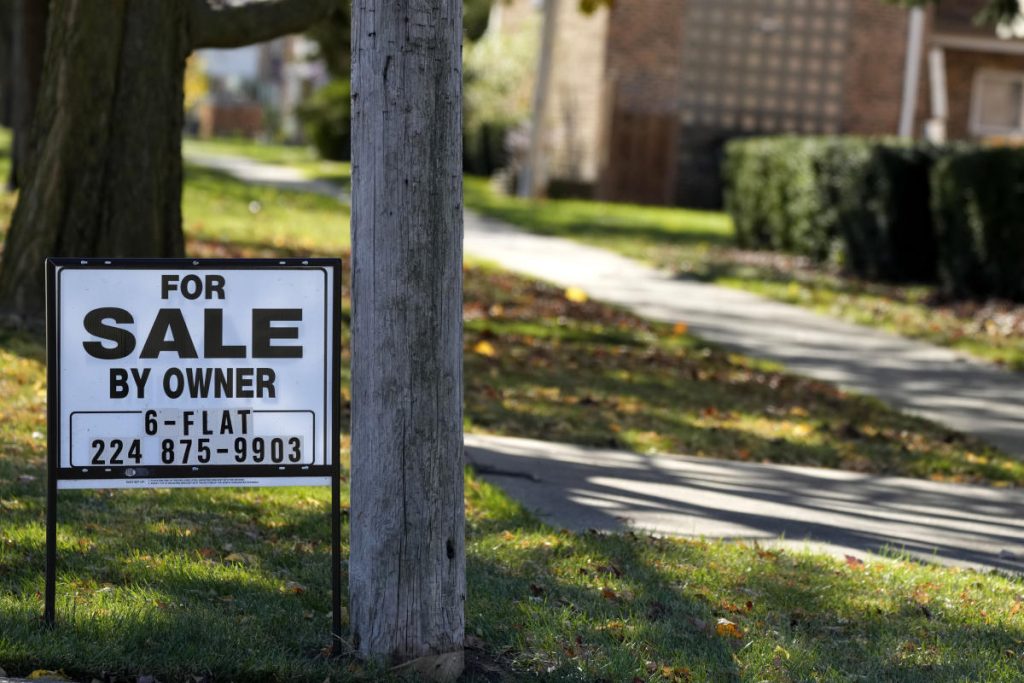
The average rate on a 30-year mortgage in the U.S. eased this week to just below 7%, its first decline after climbing five weeks in a row.
The rate fell to 6.96% from 7.04% last week, mortgage buyer Freddie Mac said Thursday. A year ago, it averaged 6.69%.
Borrowing costs on 15-year fixed-rate mortgages, popular with homeowners seeking to refinance their home loan to a lower rate, also eased this week. The average rate dropped to 6.16%, from 6.27% last week. A year ago, it averaged 5.96%, Freddie Mac said.
“While affordability challenges remain, this is welcome news for potential homebuyers, as reflected in a corresponding uptick in purchase applications,” said Sam Khater, Freddie Mac’s chief economist.
Mortgage applications edged up last week, but have been subdued in recent weeks as the average rate on a 30-year home loan hovered around 7%, according to the Mortgage Bankers Association.
This week’s decline in the cost of home loans reflects a pullback in the bond yields that lenders use as a guide to price mortgages, specifically the yield on the U.S. 10-year Treasury. The yield, which was at 3.62% in mid-September, climbed to 4.78% early last week following strong reports on the U.S. economy and worries that tariffs and other proposed policies by the Trump administration could boost inflation along with economic growth.
The 10-year Treasury yield was at 4.64% in midday trading Thursday.
Mortgage rates are influenced by several factors, including how the bond market reacts to the Federal Reserve’s interest rate policy decisions. Home loan rates have been mostly rising since the Fed signaled last month that it expected to lower its benchmark interest rate just twice this year, down from the four cuts it forecast in September. The central bank’s policymakers are due to meet again next week.
Elevated mortgage rates, which can add hundreds of dollars a month in costs for borrowers, have discouraged home shoppers, prolonging a national home sales slump that began in 2022.
While sales of previously occupied U.S. homes rose in November for the second straight month, the housing market was on track to end 2024 as its worst year for sales since 1995. Full-year home sales data are due out Friday.
Many would-be homebuyers have been priced out of the market as mortgage rates and prices have risen in recent years. The median U.S. monthly housing payment climbed to $2,686 in the four weeks ended Jan. 19, according to an analysis by Redfin. That’s the highest it’s been in nearly seven months.
Forecasting the trajectory of mortgage rates is difficult, given that rates are influenced by many factors, from government spending and the economy, to geopolitical tensions and stock and bond market gyrations.


